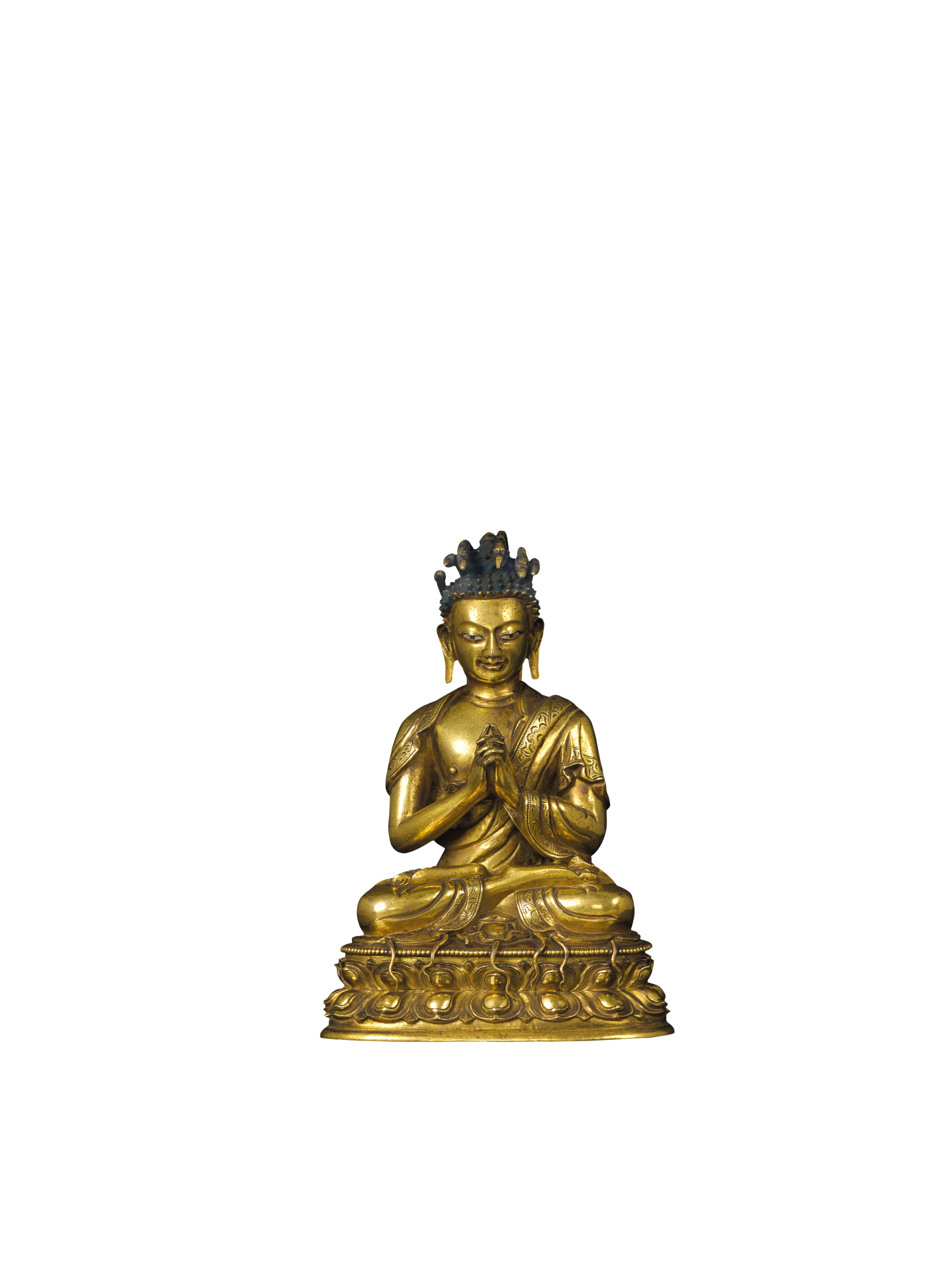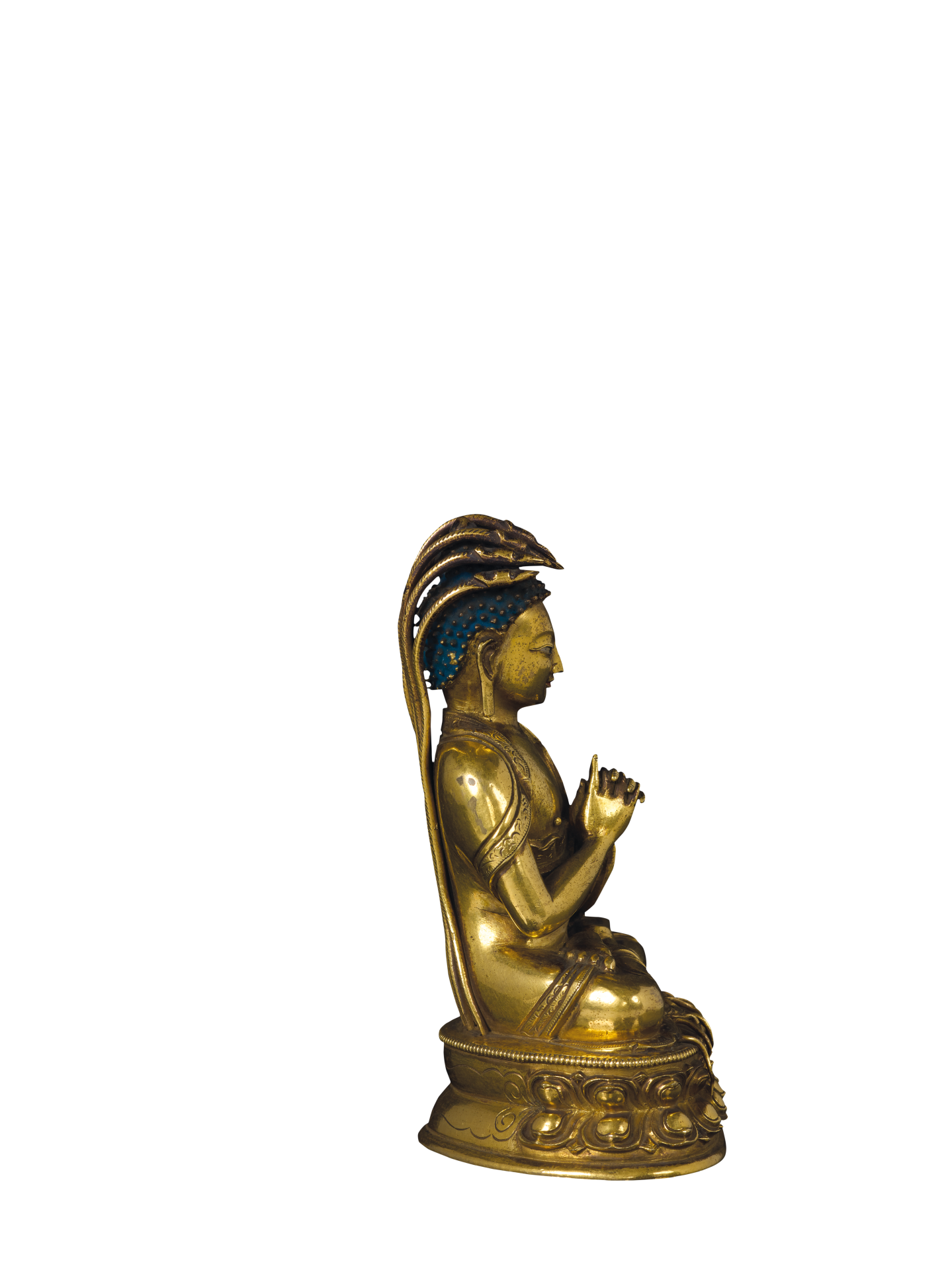Seated Nāgarāja Buddha
Nāgarāja Buddha, one of the 53 Past Buddhas, dwelled in the Buddha Land of Equality in the South. He entered nirvāṇa after leading all divine beings to salvation. To assist Śākyamuni Buddha’s undertakings, later he transformed into Bodhisattva Mañjuśrī. Devotees who persist in reciting his epithet will have all their bad karma accumulated in the previous eight aeons (kalpas) eliminated and accrue incredible merits.
This Nāgarāja Buddha statue has an oblong face, a tall conical uṣṇīṣa surmounted by a gem, a broad forehead, wide-set facial features, sharply defined eye sockets, downcast eyes with double eyelid fold and black pupils, a high straight nose with mild aquiline tip, a broad mouth with thin lips painted in red, and a smiley and jolly countenance. The kāṣāya leaves the right side of the body bare, and a corner of it drapes over the right shoulder. He is seated with legs locked in ‘lotus posture’ (padmāsana), and hands in ‘supreme bodhi gesture’ (uttarabodhimudrā). The exposed right chest is thick and bulging. The broad square shoulders and narrow waist give a V-taper torso. The drapery is succinctly depicted, with smooth and elegant crested lines. The borders of the robe are decorated with chiselled continuous beads, floral and tendril motifs. Seven serpents rear up from behind the Buddha’s head to provide protection, which is an important iconographic feature of Nāgarāja Buddha.
Since nāga is the Sanskrit word for ‘cobra’, the Nāgarāja or Nāga Kings featured here are all in the form of snakes. They are lifting their heads high and gazing forward while their tails hang over the front edge of the pedestal, adding a sense of vivacity to the dignified presence of the statue. The upper rim of the double-lotus pedestal is decorated with a round of rotund continuous beads. The petals are generously sized, carved in the round and show distinct layering. The board sealing the base of the pedestal is still intact. A crossed-vajra is engraved at the centre. It is very probable that there are sacred objects deposited still inside the pedestal.


